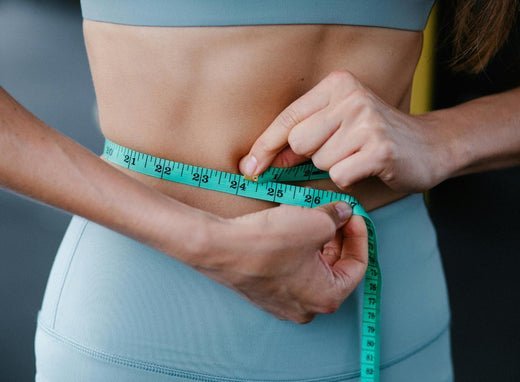
Choosing the Right Lifting Belt Size
Finding the right size for your lifting belt is crucial for maximizing performance and ensuring safety during lifts. It's not just about grabbing any belt off the shelf; it involves understanding your body's unique requirements and how they align with the belt's specifications. Most importantly, a well-fitted belt can upgrade your lifting experience by providing the necessary support and stability.
When choosing a lifting belt, the first step is to measure your waist accurately. Unlike your pant size, which might give a false sense of fit, your waist measurement should be taken around your midsection where the belt will sit. This ensures that the belt can be tightened properly, providing the right amount of support without discomfort.
Lifting belts come in a variety of sizes, typically ranging from small to extra-large, with each size corresponding to a specific waist measurement range. Some belts are adjustable, but it's still vital to start with a size that closely matches your waist measurement. Remember, a belt that's too loose won't offer adequate support, while one that's too tight can restrict movement and affect breathing.
Why Size Matters for Lifting Belts
The size of your lifting belt plays a significant role in how effectively it supports your body during heavy lifts. A belt that fits well helps maintain proper form by stabilizing your spine and core, which is essential for preventing injuries. Moreover, the right size ensures comfort, allowing you to focus on your lifts rather than adjusting an ill-fitting belt.
A common mistake is to choose a belt based solely on its brand or appearance, neglecting the importance of size. A belt that's too large might slip during a lift, reducing its effectiveness, while a belt that's too small can cause discomfort and even bruising. Therefore, taking the time to measure and select the correct size is a crucial step in your lifting journey. Explore belts for gym lifting at our store.
Common Size Ranges for Lifting Belts

Lifting belts typically come in sizes ranging from small to extra-large. Here's a general guideline to help you understand what these sizes mean in terms of waist measurements:
- Small: 23-29 inches
- Medium: 29-33 inches
- Large: 33-37 inches
- Extra-Large: 37-42 inches
- XX-Large: 42-48 inches
It's important to note that these ranges can vary slightly between manufacturers, so always check the specific sizing chart provided by the brand you're considering. Additionally, consider the width of the belt. Common widths are 4 inches and 6 inches, with 4 inches being more suitable for shorter individuals and 6 inches offering more support for taller lifters. You can browse range of powerlifting belts in our collection.
Factors Influencing Belt Size Selection
Choosing the right lifting belt size isn't solely about your waist measurement. Several other factors come into play, such as your body composition, the material and design of the belt, and the type of lifting you'll be doing. By considering these aspects, you can make a more informed decision that improves both your comfort and performance.
Impact of Body Composition on Belt Size
Your body composition can significantly influence the size of the lifting belt you need. Individuals with a higher muscle mass might require a different fit than those with more body fat. Muscle mass can affect how a belt sits on your body, potentially requiring a larger size for optimal comfort and support.
On the other hand, those with more body fat may find that a belt needs to be adjusted differently to accommodate their shape. It's crucial to try on a belt and ensure it fits snugly without causing discomfort. A belt that's too tight can dig into your skin, while one that's too loose won't provide the necessary support. We also have a custom anime belts collection.
Step-by-Step Guide to Measuring for a Lifting Belt

- Get a flexible measuring tape.
- Wear the clothing you typically wear during workouts.
- Stand up straight and relax your stomach.
- Measure around your midsection where the belt will sit.
- Record the measurement and compare it with the manufacturer's size chart.
Measuring for a lifting belt is a straightforward process, but it's crucial to get it right to ensure the belt fits properly. Begin by standing up straight and relaxing your stomach. It's important to measure around your midsection, not your hips or where your pants sit, because this is where the belt will be worn during lifts.
When you measure, make sure the measuring tape is snug but not too tight. You want to mimic the fit of the belt itself, which should be tight enough to provide support but not so tight that it restricts breathing or causes discomfort. This initial measurement will be your guide when selecting a size from the manufacturer's chart.
Tools Needed for Accurate Measurement
For accurate measurement, you'll need a flexible measuring tape. These tapes are easy to wrap around your body and provide precise measurements. If you don't have a flexible tape, a piece of string and a ruler can work as an alternative. Simply wrap the string around your midsection, mark where the end meets, and then measure the string with a ruler.
Finding Your Natural Waist
Finding your natural waist is key to measuring for a lifting belt. Your natural waist is typically the narrowest part of your torso, just above your belly button and below your rib cage. To find it, stand up straight and bend to one side; the crease that forms is your natural waist.
Once you've located your natural waist, wrap the measuring tape around it, ensuring that it's parallel to the floor. This will give you the most accurate measurement for selecting your lifting belt size. Remember, the belt should sit snugly at this point during lifts to provide maximum support.
Using Manufacturer's Size Chart
Once you have your waist measurement, consult the manufacturer's size chart. This chart will guide you in selecting the right size belt based on your measurement. Each brand may have slightly different sizing, so it's important to refer to the specific chart for the belt you're considering.
If your measurement falls between two sizes, it's usually better to choose the larger size. This allows for more adjustability and comfort. Additionally, some belts come with additional holes or notches for further customization, so take that into account when making your decision.
Maximizing Performance with the Correct Sized Belt

A correctly sized lifting belt can significantly improve your performance by providing the necessary support to your core and lower back during heavy lifts. This support helps you maintain proper form, which is crucial for both effectiveness and safety.
Moreover, a well-fitted belt allows you to generate more intra-abdominal pressure, stabilizing your spine and reducing the risk of injury. This pressure acts like a natural brace, allowing you to lift heavier weights with confidence and control.
Benefits of a Properly Fitted Belt
The benefits of a properly fitted lifting belt extend beyond just support. With the right fit, you'll experience increased confidence during lifts, knowing that your core is well-supported. This confidence can translate into better performance and the ability to push your limits safely.
Additionally, a good fit reduces the likelihood of the belt shifting during a lift, which can be distracting and potentially dangerous. By staying securely in place, the belt provides consistent support throughout your workout.
Common Mistakes to Avoid
One common mistake is selecting a belt based on your pant size rather than your actual waist measurement. This often leads to an ill-fitting belt that doesn't provide adequate support. Always measure your waist accurately and refer to the size chart.
Another mistake is wearing the belt too tightly. While it should be snug, an overly tight belt can restrict breathing and movement, which can hinder performance and increase the risk of injury. Adjust the belt to ensure it's tight enough to provide support but still allows for natural breathing and movement. If you want to learn it for squats, we have a complete guide on how to wear a lifting belt when hitting back squat.
Practical Tips for Buying the Best Lifting Belt

When purchasing a lifting belt, consider trying it on if possible. This gives you the opportunity to ensure it fits comfortably and securely. If you're buying online, check the return policy in case the size isn't right.
Also, think about the type of lifting you'll be doing. Different styles, such as powerlifting or Olympic lifting, may require different types of belts. Powerlifting belts tend to be thicker and provide more support, while Olympic lifting belts are often more flexible to allow for greater mobility.
Consider Seasonal Changes: Bulking and Cutting
When selecting a lifting belt, consider any seasonal changes in your training routine, such as bulking or cutting phases. During a bulking phase, your waist size may increase due to added muscle mass and body fat, whereas during a cutting phase, your waist size might decrease. It's wise to account for these fluctuations when choosing a belt size. Some lifters even opt for two belts to accommodate these changes, ensuring they always have the right fit regardless of their current phase. Another important factor is fabric. For that, read our comparison of leather vs nylon lifting belts.
Try Before You Buy: Importance of Fit Testing
Whenever possible, try the lifting belt on before purchasing. This allows you to assess how it feels when worn and how well it supports your core during movements. If trying it on in a store isn't an option, ensure there's a good return policy when buying online. A fit test can prevent the inconvenience of returning an ill-fitting belt and ensures you get a belt that meets your needs and preferences.
Conclusion
Investing in the right lifting belt is not just about enhancing performance; it's about prioritizing your safety and well-being. A well-chosen belt provides the necessary support and stability, allowing you to lift heavier weights with confidence. By considering factors like size, body composition, and lifting style, you can select a belt that complements your lifting routine and helps you achieve your fitness goals safely.
Remember, the right belt can make a significant difference in your lifting experience. Take the time to measure accurately, consult size charts, and consider trying on different belts. This investment in your safety and performance is one that will pay off in the long run, helping you lift smarter and more effectively.
FAQs
Q: What size lifting belt should I get for my weightlifting needs?
A: To determine the right lifting belt size, you should measure your waist circumference and refer to a lifting belt size chart. Generally, you want a belt that fits snugly around your waist without being too tight, allowing you to use the Valsalva maneuver effectively during exercises like squats and deadlifts.
Q: How do I measure my waist for a weightlifting belt?
A: To measure your waist for a weightlifting belt, use a soft measuring tape and wrap it around your waist at the level where you plan to wear the belt. Ensure that the tape is level and snug but not constricting. Record the measurement and consult a belt size chart to find your appropriate size.
Q: What is the difference between a 10mm and a 13mm leather weightlifting belt?
A: The main difference between a 10mm and a 13mm leather weightlifting belt is the thickness. A 13mm belt offers more support and is often preferred by powerlifters for heavy lifts, while a 10mm belt provides greater flexibility and range of motion, making it suitable for Olympic weightlifting and dynamic movements.
Q: Can I wear a lifting belt for all types of exercises?
A: While it is beneficial to use a weightlifting belt during heavy lifts such as squats, deadlifts, and bench presses, it is not necessary for lighter exercises or movements that require a full range of motion. It's essential to use a belt strategically to support your core muscles during intense weight training.
Q: What should I consider when choosing the type of belt for lifting?
A: When choosing the type of belt for lifting, consider factors such as the material (leather or nylon), thickness (10mm or 13mm), and closure mechanism (lever or prong). Each type has its benefits; for instance, a leather belt provides durability and support, while a nylon belt is often lighter and more comfortable for dynamic movements.
Q: How does a weightlifting belt help during heavy lifting?
A: A weightlifting belt helps by increasing intra-abdominal pressure, which stabilizes the core muscles during heavy lifting. This added support allows for better biomechanics and can help reduce the risk of injury when performing exercises like squats and deadlifts.
Q: Is it necessary to wear a belt during all my training sessions?
A: It is not necessary to wear a belt during all training sessions. Many lifters choose to wear a belt only for their heaviest sets or when performing exercises that put significant strain on their core. It's important to develop your core strength without a belt before relying on one during lifting.
Q: How can I ensure that my lifting belt fits properly?
A: To ensure your lifting belt fits properly, try it on with the clothes you typically wear while training. The belt should be snug around your waist but allow you to breathe comfortably. Additionally, check that the belt doesn’t shift excessively during movement and provides adequate support without restricting your range of motion.
Q: What is the best way to break in a new leather weightlifting belt?
A: To break in a new leather weightlifting belt, wear it during lighter training sessions to allow the leather to soften and conform to your body shape. Gradually increase the weight lifted while using the belt until it feels comfortable and provides the support you need during heavy lifts.
Q: What should I do if my lifting belt feels too tight during workouts?
A: If your lifting belt feels too tight during workouts, consider adjusting the fit or trying a smaller size. It’s crucial to ensure that the belt provides support without compromising your ability to breathe and perform your lifts effectively. Reassess your measurements and consult a lifting belt size chart to find the right fit.





